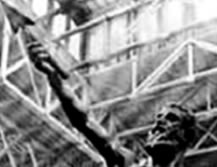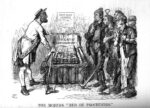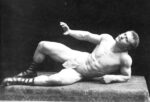Description
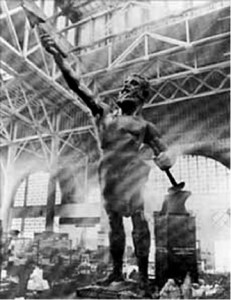
Meet Vulcan in Alabama, the largest cast iron statue in the world, and the second largest statue in the USA after the Statue of Liberty. The Roman god of the forge stands 56 feet in height from his sandals to his extended fingers. He was commissioned by the businessmen of Birmingham’s Commercial Club in 1904 as a symbol of Birmingham, Alabama’s status as producer of iron, cast-iron pipe and rail steel. (For a higher quality image click HERE.)
He was exhibited in the Palace of Mines and Metallurgy at the World’s Fair in St. Louis in 1904. The sculptor, born in Italy, was Giuseppe Moretti. He needed a huge team of workmen to create the enormous figure. Vulcan holds a spear in his right hand and a hammer resting on an anvil in the other. In 1939 he was installed on a tall column in Red Mountain visible to the whole city of Birmingham.
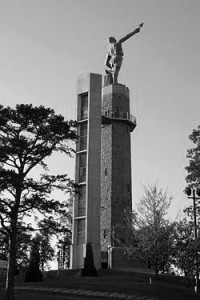
The class politics here are complicated. The capitalist forge-owners subsidized the statue, but their wealth came directly from the labour of the iron workers. Yet, in the South, industrialization was perceived as a progressive force because it was replacing slave-based agriculture.
Vulcan as a hero is always problematic. After all he obeyed the instructions of the tyrannical Zeus in Prometheus Bound, and in so doing gruesomely fastened his fellow Titan Prometheus to hard rock. This complexity can be read in the statue. Does it really glorify the act of labour? Is it primarily an Alabaman Nationalist monument? Is it just evidence of businessmen looking for capital investment in Alabama from wealthy industrialists elsewhere?

